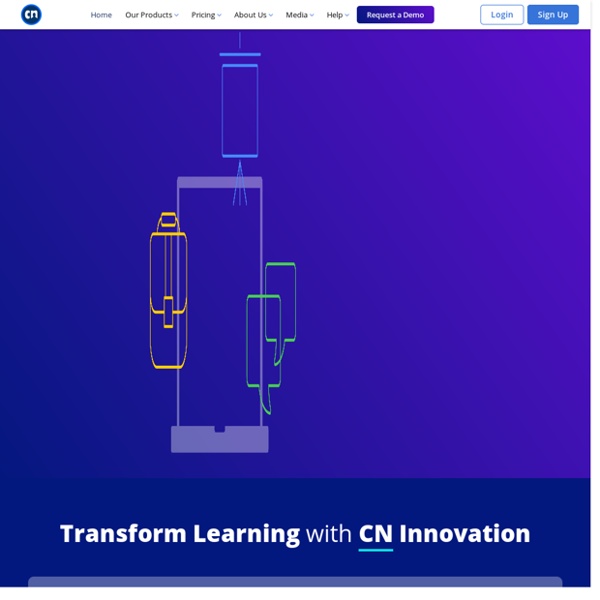



Best Practices for Teaching Online January 29 Designing Effective Team Projects in Online Courses By: Stephanie Smith Budhai PhD Participating in team projects offers students the chance to develop interpersonal communication skills (Figueira & Leal, 2013), build relationships with classmates, and increase the level of collective competencies as each group member brings something different to the group. However, in the online environment where the majority of the work occurs asynchronously, students may resist having to work with others (Smith et al., 2011) on graded assignments.
Wiki (Stud.IP) Blended and Flipped Learning Archives - Faculty Focus | Higher Ed Teaching & Learning June 15, 2015 Flipping Assessment: Making Assessment a Learning Experience By: Susan Spangler PhD If you’re a regular reader of this blog, you’re already aware that flipped instruction has become the latest trend in higher education classrooms. CoWriter (Stud.IP) Lecture Capture: A New Way to Think about Hybrid Courses - Faculty Focus | Higher Ed Teaching & Learning “Hybrid education” has become a hot catchphrase recently as faculty blend face-to-face learning with online technology. But the growth of hybrid education has been steered by the unstated assumption that hybrid technology should be used to facilitate discussion outside of the classroom, while classroom time should be spent lecturing. Now José Bowen, dean of the Meadows School of the Arts at Southern Methodist University, challenges this assumption by asking his faculty to put their lectures online and devote face-to-face classes to discussion. His logic is impeccable. In fact, why should faculty create their own lectures at all? I tell faculty that their real value is not the information stored in their head. Teachers can test the waters of Bowen’s teaching model by putting one or two of their lectures online and devoting the subsequent class to discussion of the topics in those lectures. Give it a try, and let me know how it works. Lecture sites
Meetings (Stud.IP) Using Blended Learning to Transform the Classroom Experience - Faculty Focus | Higher Ed Teaching & Learning When we maintain our focus on learning, the means used to help students learn dominates our thinking. Too often teachers can fall into the trap of testing students only on lower-level material (knowledge and comprehension questions). When exams become the only means to assess learning, a teacher becomes a carpenter with only a hammer: all problems start to seem like nails. Blended courses offer a way to move beyond a midterm and a final. By combining the benefits of online instruction with the advantages of face-to-face instruction, you might improve learning in your course in ways that are impossible to achieve using only face-to-face meetings or only online resources. I often hear teachers lament that there is so much content in a course that they never have time to do any critical-thinking activities in class. When designing a blended learning course, the instructor should remember to use the online portion as an opportunity to create more exciting face-to-face interactions.
Blended Learning Course Design Mistakes to Avoid Blended learning course design entails more than simply converting content for online delivery or finding ways to supplement an existing face-to-face course. Ideally, designing a blended course would begin with identifying learning outcomes and topics, creating assignments and activities, determining how interaction will occur, and selecting the technologies to best achieve those learning outcomes. However, a variety of constraints often affect the way blended courses are developed, which can compromise their quality. In an interview with Online Classroom, Veronica Diaz, associate director of the EDUCAUSE Learning Initiative, talked about how to avoid common mistakes in blended course design. Blended Learning Course Design Mistake #1: Adopting an add-on model. Blended Learning Course Design Mistake #2: Lack of coherence between online and face-to-face modes. Blended Learning Course Design Mistake #3: attempting direct conversion from one mode to the other.
Private Journal Replaces Discussion Forum in Blended Course The discussion board in Kathleen Lowney’s large blended (or hybrid) section of introduction to sociology at Valdosta State University wasn’t serving its intended purpose of engaging learners with the content and preparing them for face-to-face class sessions. She tried dividing the students into smaller discussion groups of 50 and then 20, and the results were the same: the weaker students waited until the last minute and essentially repeated what the better students had posted previously. When she replaced the public discussions with private journals, the quality of students’ posts improved, as did their grades. Lowney’s course is a “supersection” hybrid that has an enrollment of 150 to 300 students and meets Tuesdays and Thursdays with a significant online component. She also observed that students who posted earlier and engaged in original thinking did better on tests. Lowney now assigns a private prewrite, which asks students to apply concepts.